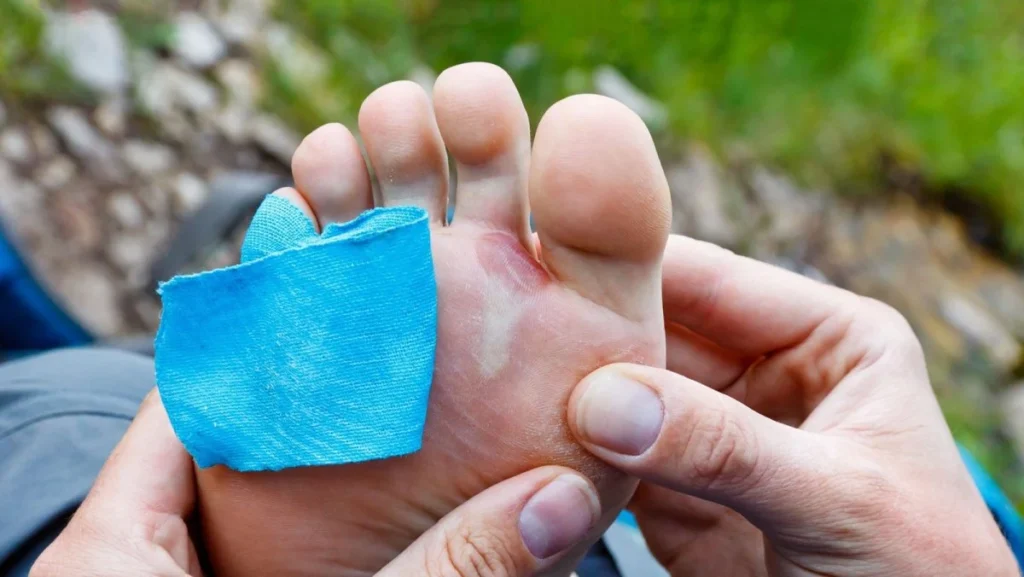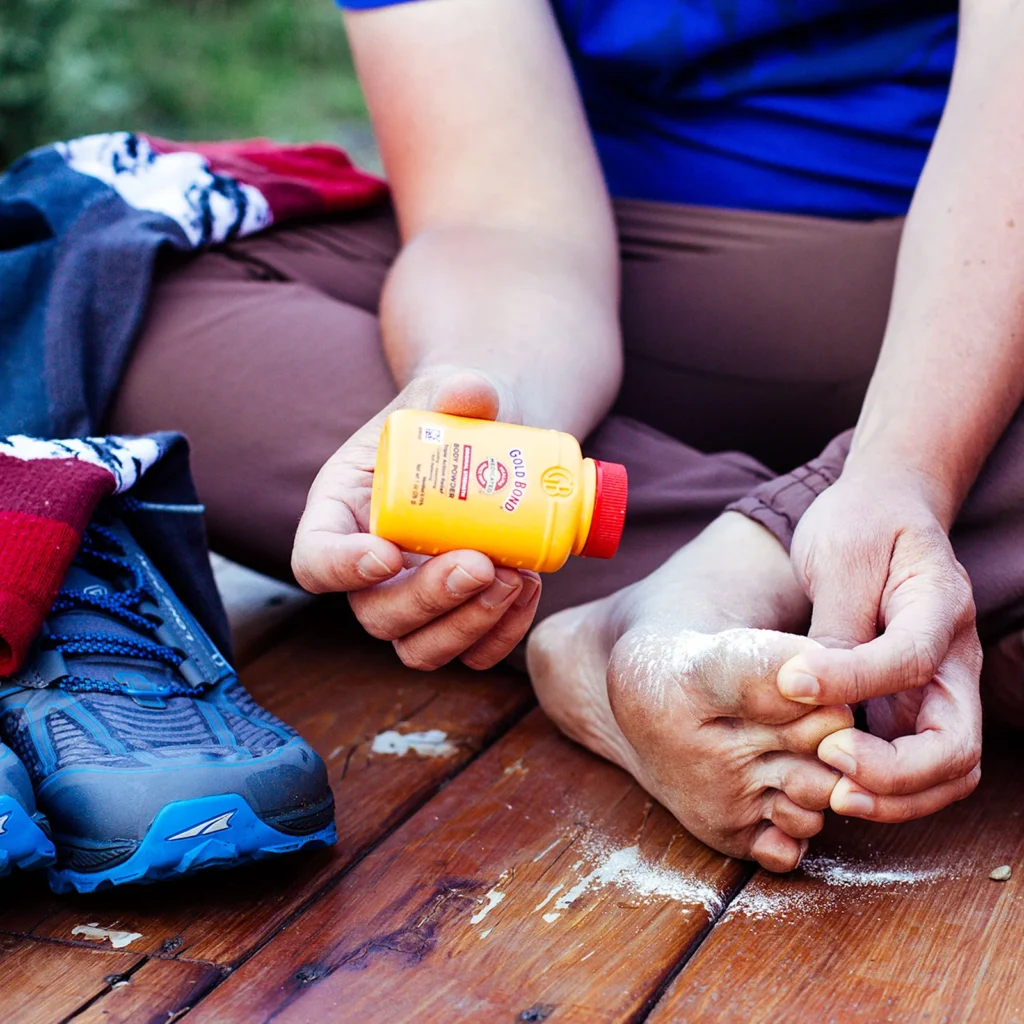Running is fantastic for your health and a great way to clear your mind, but nothing ruins a good run like those pesky blisters. They can turn a pleasurable jog into a painful slog. So, let’s dive into the nitty-gritty of preventing blisters and keeping your feet happy and healthy.

Preventing blisters
What Are Blisters?
Blisters are small pockets of fluid that form on the upper layers of your skin. They usually pop up when your skin is subjected to friction, heat, or other forms of irritation. They love appearing on your feet during runs, mainly because of the repetitive motion and pressure.
Why Do Blisters Happen?
Friction and Heat
Friction is the main culprit behind blisters. When your skin rubs against your shoes or socks repeatedly, it creates friction. Combine that with the heat generated from running, and you’ve got a recipe for blisters. Common friction points include the heels, toes, and the balls of your feet.
Moisture
Sweaty feet are more prone to blisters. Moisture softens the skin, making it more susceptible to tearing under pressure and friction. Whether it’s from sweat or running in the rain, moisture is a significant factor in blister formation.
Ill-Fitting Shoes and Socks
Wearing shoes that are too tight or too loose can lead to blisters. Shoes that don’t fit properly cause your feet to slide around or get squished, both of which create friction. Similarly, socks that are too big or too small can bunch up or slip, leading to blisters.
Repetitive Motion
Running involves a lot of repetitive motion. While this is great for building endurance, it also means certain areas of your feet are constantly under pressure. This repetitive stress can easily lead to blisters, especially during long runs.
Preventive Measures for Blisters

Choosing the Right Footwear
Proper footwear is your first line of defense against blisters. Make sure your running shoes fit well, providing enough room for your toes while snugly supporting your heels. Look for shoes with breathable materials to help keep your feet dry.
Socks Matter
Not all socks are created equal. For preventing blisters, opt for moisture-wicking socks made from materials like merino wool or synthetic blends. These materials help keep your feet dry by drawing moisture away from your skin. Double-layered socks can also reduce friction and are worth considering.
Foot Care Routine
Taking care of your feet can go a long way in blister prevention. Keep your feet dry by changing your socks regularly, especially if they get wet. Applying foot powders or antiperspirants can help reduce moisture. Keeping your toenails trimmed will also prevent unnecessary rubbing against your shoes.
Lubrication
Using lubricants can significantly reduce friction. Apply a thin layer of petroleum jelly or specialized sports lubricants on areas prone to blisters before you put on your socks and shoes. This creates a slippery surface, reducing friction and helping in preventing blisters.
Advanced blister prevention techniques
Taping and Padding
For those stubborn spots that always seem to blister, taping or padding can be a lifesaver. Use athletic tape or moleskin to cover areas where blisters frequently occur. This extra layer reduces friction and protects your skin.
Hydration and Nutrition
Staying hydrated isn’t just good for your overall health; it’s crucial for your skin, too. Well-hydrated skin is more resilient and less likely to blister. Eating a balanced diet rich in vitamins A, C, and E supports skin health and can aid in blister prevention.
Training Adjustments
Gradually increasing your running intensity allows your feet to adapt and toughen up. Jumping straight into long runs or intense workouts can lead to blisters. Listen to your body, and give your feet time to recover.
Treatment of Existing Blisters
First Aid for Blisters
If you do get a blister, don’t panic. Clean the area gently and cover it with a blister-specific bandage or padding. Avoid popping the blister if possible, as this can lead to infection. If the blister is large and painful, you might need to drain it with a sterilized needle, followed by proper cleaning and protection.
Healing Process
Keeping blisters clean and protected is key to healing. Change the bandage regularly and keep the area dry. Over-the-counter blister treatments can help speed up the healing process and provide relief.
Conclusion
Blisters might seem like small annoyances, but they can seriously impact your running routine. By understanding the causes and implementing these prevention techniques, you can keep blisters at bay and focus on enjoying your runs. So lace up, take care of your feet, and happy running!
We recommend that you read The Truth About Somatic Exercise for Weight Loss & Unveiling the Impacts of Social Media on Mental Health
